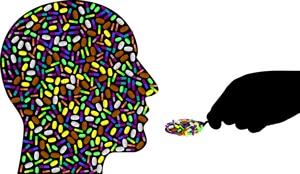
March 9, 2020
Another Look At The Opioid Crisis
By Michael D. Shaw
This column first dealt with this topic back in August, 2017. In that piece, we covered the basics, and linked to the draft of this final report issued by the President’s Commission on Combating Drug Addiction and the Opioid Crisis. The most shocking finding was that 175 Americans per day die as a result of the opioid crisis. As Governor Chris Christie put it in his transmittal letter to the president:
“Our people are dying. More than 175 lives lost every day. If a terrorist organization was killing 175 Americans a day on American soil, what would we do to stop them? We would do anything and everything. We must do the same to stop the dying caused from within. I know you will.”
This month, The New Center issued a report on the matter. The report provides an interesting historical perspective, beginning with opium pills dispensed during the Civil War. Since everything in healthcare is a fad, physicians soon viewed opiates as a panacea for pain. In fairness, beyond suffering and whiskey, there were few alternatives in that era.
However, addiction was rampant, and in 1872, Boston physician F.E. Oliver noted, “It is not too soon to look about us and see how far [opium] has intruded upon our soil, that we may be the better prepared to meet, if need be, so insidious a foe.” If your tastes run to more pithy quotes, here’s one from famed drug historian David T. Courtwright: “Though it could cure little, it could relieve anything.”
The New Center’s report offers six recommendation for addiction intervention and the prevention of future addiction…
1. Removing barriers to medication-assisted treatment (MAT) — The efficacy of MAT is supported by multiple studies, but there are not enough qualified docs and insurance coverage is still limited. Plus, even though this sentiment is fading, there are still those who are against “trading one addiction for another.” While methadone treatment is legal in all 50 states, Medicaid reimbursement is not universal.
States that do not allow Medicaid reimbursement for methadone treatment are Alabama, Arkansas, Idaho, Illinois, Iowa, Kentucky, Louisiana, Nebraska, North Dakota, South Carolina, Tennessee, Texas, and Wyoming, several of which have among the nation’s highest rates of opioid addiction and overdose deaths.
2. Delivering comprehensive care through the hub and spoke model — The hubs offer high-intensity MAT, and the regional spokes do not offer methadone, but provide other MAT, case management, urgent medical care, and hands-on support for those early in their treatment.
3. Creating a support system through drug courts — Instead of jailing individuals, drug courts connect people with medical treatment, mental health services, and judicial supervision.
4. Better educating medical students on chronic pain — At present, coverage of this topic in med school is woefully inadequate. Congress is working on ways to improve the current situation.
5. Streamlining the use of prescription drug monitoring programs — While rigorous programs have lowered overdose deaths, there is still the problem of the availability of the drugs being severely limited to the legit chronic pain sufferers who truly need them. Indeed, some of these patients seek other sources of pain relief, including heroin and fentanyl.
6. Allowing federal grants to provide flexible funding — Addicts are not necessarily limited to a single drug, and may even move to non-opioids, such as methamphetamine. Thus, laws should avoid drug-specific language, promoting flexibility to quickly changing conditions.
The New Center offers no general statement on how we’re doing compared to the time of the 2017 report, and it may be too soon to come to any grandiose conclusions, especially in light of this recently published study in Addiction. It is being touted in the popular media as “The Opioid Crisis May Be Far Worse than We Thought.” That’s because the number of deaths attributed to opioid-related overdoses could be 28 percent higher than reported due to incomplete death records.
Other sources push the narrative that we are making progress, but more work needs to be done, usually accompanied with a request for funding for their own pet projects. Like the man said, everything in healthcare is a fad.
